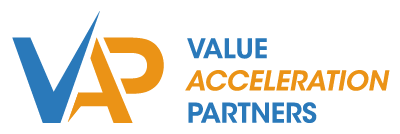Performance evaluations are a critical aspect of managing your team effectively. As a leader in your organization, you understand that getting the most out of your employees is essential for the growth and success of the company. In this post, I will explore the ins and outs of performance evaluations and how to leverage them to drive productivity, motivation, and overall excellence in your team.
Effective performance evaluations offer numerous benefits. They help ensure that everyone is on the same page, fostering a sense of alignment and purpose within the organization. By reinforcing employees’ value and commitment to their development, evaluations contribute to higher job satisfaction and retention rates. They also provide an opportunity to acknowledge good work and motivate employees to strive for excellence continually. It’s crucial to recognize that these evaluations aren’t just a formality; they are a valuable tool for continuous improvement and employee development.
In my own experience, I have seen performance evaluations that left an employee demoralized and dejected and I have seen them have a profoundly positive impact on employee motivation and engagement. It is all about how you go about it.
The Process
When setting expectations and goals for your employees, mutual buy-in is key. This approach fosters a sense of ownership and commitment from your team. It’s a fundamental step in ensuring that everyone understands their role in achieving the company’s objectives.
To make these meetings productive and constructive, the element of surprise should be minimized. Regular feedback throughout the year is essential to ensure that employees are aware of their strengths and areas for improvement. Separating the performance review from compensation discussions also allows you to focus on individual growth and development, making the conversation more effective and meaningful.
Common Challenges
Here are few of the more common challenges leaders face/encounter:
Too Much Subjectivity
Challenge: Bias, whether conscious or unconscious, can influence evaluations and result in unfair assessments.
Solution: Implement objective criteria and standardized evaluation forms. Encourage evaluators to undergo training on recognizing and mitigating bias. Use multiple evaluators or 360-degree feedback to provide a more comprehensive view.
Inconsistent Evaluation Criteria
Challenge: Inconsistent or unclear evaluation criteria can lead to confusion and disparities in assessments.
Solution: Establish clear and measurable performance metrics and criteria that align with organizational goals. Provide evaluators with guidance on how to use these criteria consistently. Regularly update and communicate the evaluation criteria to ensure they remain relevant.
Inadequate Preparation
Challenge: Rushed or inadequate preparation usually results in ineffective performance review meetings.
Solution: Encourage both employees and evaluators to prepare in advance. Employees can reflect on their achievements and areas for improvement, while evaluators should review performance data and feedback. Schedule meetings well in advance to allow time for preparation.
Vague Feedback
Challenge: Providing vague or insufficient feedback can leave employees unclear about their performance.
Solution: Encourage evaluators to be specific and provide examples in their feedback. Highlight both strengths and areas for improvement. Offer guidance on how to set actionable goals based on the feedback. Training for evaluators on effective feedback techniques can also be beneficial.
Legal Missteps
Challenge: Ignoring legal requirements or mishandling sensitive issues during evaluations can lead to legal repercussions.
Solution: Ensure that your evaluation process complies with relevant labor laws and regulations. Train evaluators on legal requirements and ethical standards. Seek legal counsel if needed, especially when dealing with sensitive issues such as discrimination or harassment.
Best Practices for Conducting Effective Performance Evaluations
Based on both experience and research, several best practices stand out.
- Thorough preparation by both parties is essential to ensure that the evaluation meeting is productive.
- It’s also advisable to maintain a clear separation between performance and compensation discussions to avoid overshadowing development goals with monetary concerns.
- Well-documented evaluations provide a record of progress and areas for improvement, which can be invaluable for future growth. Moreover, giving employees an opportunity to share their perspective fosters open communication and mutual understanding.
- Striking a balance between constructive criticism and acknowledgment of strengths is an art in performance evaluations. Remember that recognizing and celebrating accomplishments can boost employee morale and motivation. However, constructive criticism is essential for growth and development. A holistic approach to feedback ensures that employees leave the evaluation meeting motivated and with a clear path for improvement.
Mastering performance evaluations is a crucial skill for leaders. By combining your own insights with best practices, addressing common challenges, and leveraging the benefits, you can create a workplace culture that values growth, open communication, and employee development. Embrace performance evaluations as a tool to align your team, acknowledge achievements, and drive success in your organization.

